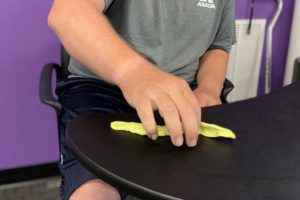Its Summer, Let’s Hit The Pool!!!
July 12, 2022
Now that summer is upon us, the heat can seem unrivaled most days. This will drive all of us to the nearest watering hole for some relaxation and cool-down. While the pool is a great way to cool off and have some fun with family and friends, it can also be a chance for us to get in some exercise! There are many benefits to aquatic therapy and various reasons why doctors may prescribe it.
Aquatic therapy refers to exercise performed in a pool for the purpose of rehabilitation for troubled muscles or joints. Due to the buoyant nature of water, pressure no longer rests on the joints when they are submerged, opposite of what we find to be true on land. This provides relief, allowing for a greater tolerance to strengthening and stability exercises. Exercise within a therapeutic pool is also known to decrease edema, or swelling, which will allow for improved joint mobility. Water provides a good resistance against the joints and muscles, improving strength without having to use weights or bands. This could save you money you may feel pressure to spend on equipment. If you have access to a therapeutic pool, the water sits at a higher-than-normal temperature, soothing sore muscles and decreasing pain. Water exercise is also known to decrease spasticity in muscles, helping to improve function and motor control with daily activities. There is a wide range of patient populations that may benefit from aquatic therapy. These include but are not limited to those diagnosed with arthritis, fibromyalgia, spinal cord injuries, vestibular deficiencies, and total joint replacements.

Here at Witte Physical Therapy Louisville, we have a state-of-the-art aquatic therapy pool in our clinic. The temperature rests at 93 degrees and has an underwater treadmill to assist in functional movement and gait training in a gravity-assisted environment. We have skilled therapists on-site and ready to guide you through a personalized plan of care set forth by the evaluating therapist. We provide the tools and exercise regimen needed to help you succeed. We will also help you set goals, create a plan to reach those goals, and help you progress back to your prior level of function. If you are looking for a different treatment option or are interested to learn more about our therapeutic pool, give us a call today at 1-402-234-3333.










